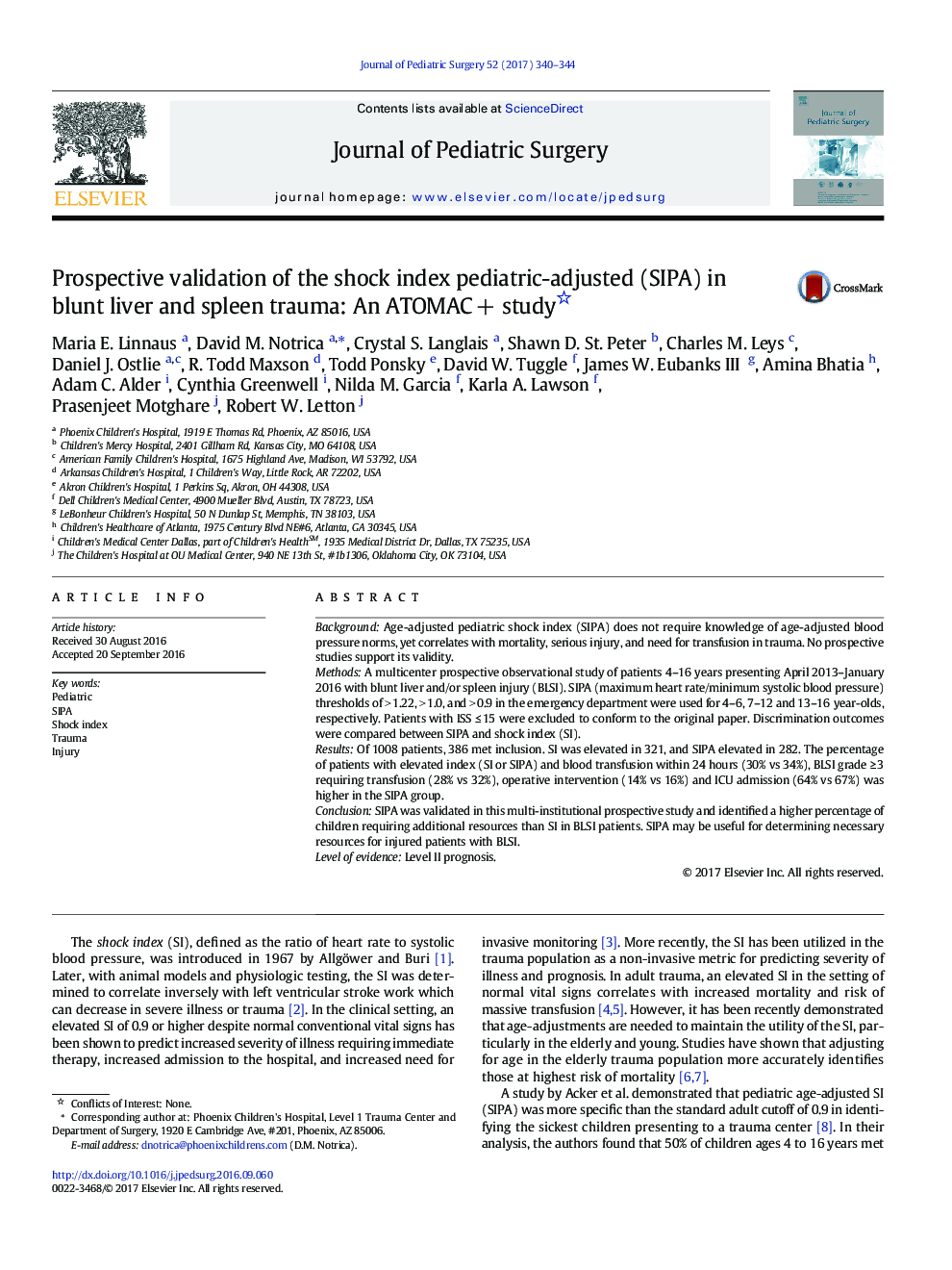| Article ID | Journal | Published Year | Pages | File Type |
|---|---|---|---|---|
| 5718428 | Journal of Pediatric Surgery | 2017 | 5 Pages |
BackgroundAge-adjusted pediatric shock index (SIPA) does not require knowledge of age-adjusted blood pressure norms, yet correlates with mortality, serious injury, and need for transfusion in trauma. No prospective studies support its validity.MethodsA multicenter prospective observational study of patients 4-16 years presenting April 2013-January 2016 with blunt liver and/or spleen injury (BLSI). SIPA (maximum heart rate/minimum systolic blood pressure) thresholds of > 1.22, > 1.0, and > 0.9 in the emergency department were used for 4-6, 7-12 and 13-16 year-olds, respectively. Patients with ISS â¤Â 15 were excluded to conform to the original paper. Discrimination outcomes were compared between SIPA and shock index (SI).ResultsOf 1008 patients, 386 met inclusion. SI was elevated in 321, and SIPA elevated in 282. The percentage of patients with elevated index (SI or SIPA) and blood transfusion within 24 hours (30% vs 34%), BLSI grade â¥Â 3 requiring transfusion (28% vs 32%), operative intervention (14% vs 16%) and ICU admission (64% vs 67%) was higher in the SIPA group.ConclusionSIPA was validated in this multi-institutional prospective study and identified a higher percentage of children requiring additional resources than SI in BLSI patients. SIPA may be useful for determining necessary resources for injured patients with BLSI.Level of evidenceLevel II prognosis.
